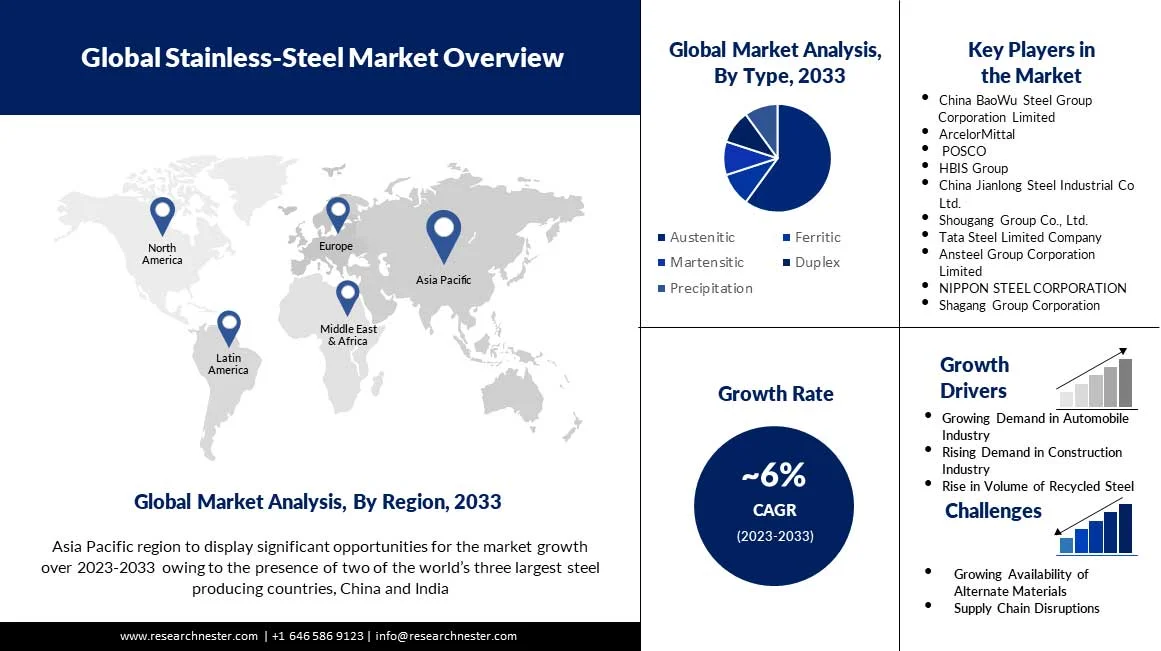
Stainless-Steel Market size was valued at USD 148.35 billion in 2024 and is likely to exceed USD 323.26 billion by the end of 2037, expanding at over 6.3% CAGR during the forecast period i.e., between 2025-2037. In the year 2025, the industry size of stainless steel is evaluated at USD 155.71 billion.. The primary growth driver for the global stainless steel market is its widespread use across various key industries, globally. Stainless steel is widely employed in the infrastructure and construction sectors. It is also used in the production of vehicles for applications such as exhaust systems, body panels, and fuel tanks. It is estimated that the world finished steel production grew from 1 .76 Billion tons in 2020 to 1.84 Billion tons in 2021. Furthermore, the transition from conventional uses in industries like consumer products, construction, architecture, etc. to extensive uses in industries like the railroad, car, and transportation sectors is another factor driving the industry. Owing to the cost reductions in the steel-making process and the adoption of more energy-efficient production methods, there is likely to be a rising transition from older to newer technologies, which is expected to support market growth.
The components of stainless-steel combine to create a potent alloy. Nitrogen, molybdenum, and chromium are all components of this alloy. The item is additionally corrosion-resistant, durable, robust, neutral alloy, and eternally recyclable. Steel is an ideal material for a variety of industries, including the automotive, building, and electronics sectors, along with use in the medical and healthcare sector for applications such as surgical instruments, implants, and medical equipment. Additionally, the product's capacity to resist corrosion together with expanding recycling production will further support the market expansion during the anticipated timeframe. Additionally, the renewable energy sector has only been increasing its steel consumption, for applications such as wind turbine towers and blades, wave energy converters, and solar thermal systems. Manufacturers have been creating consistent sources of income in the steel business over the past few years since steel is a necessary raw material for most sectors. The total global crude steel production has seen a small but steady increase to 1.94 Billion tons in 2021 from 1.88 Billion in 2020.

Author Credits: Rajrani Baghel
Copyright © 2024 Research Nester. All Rights Reserved

FREE Sample Copy includes market overview, growth trends, statistical charts & tables, forecast estimates, and much more.
Have questions before ordering this report?